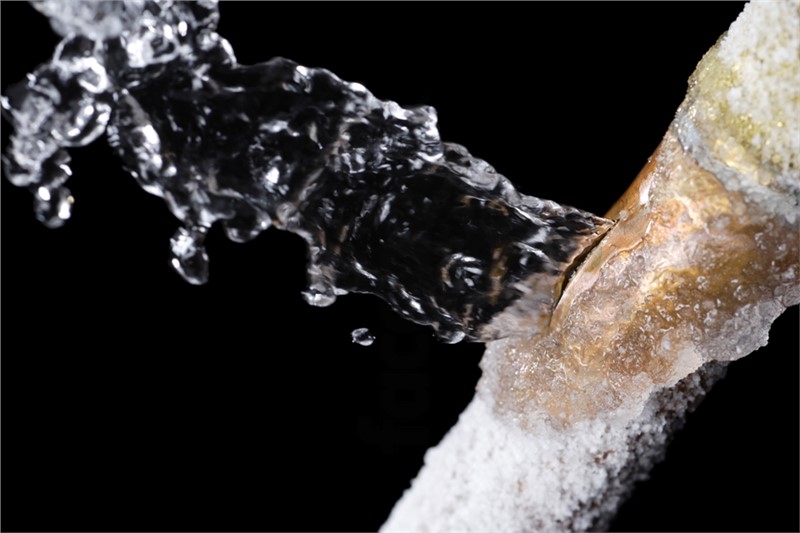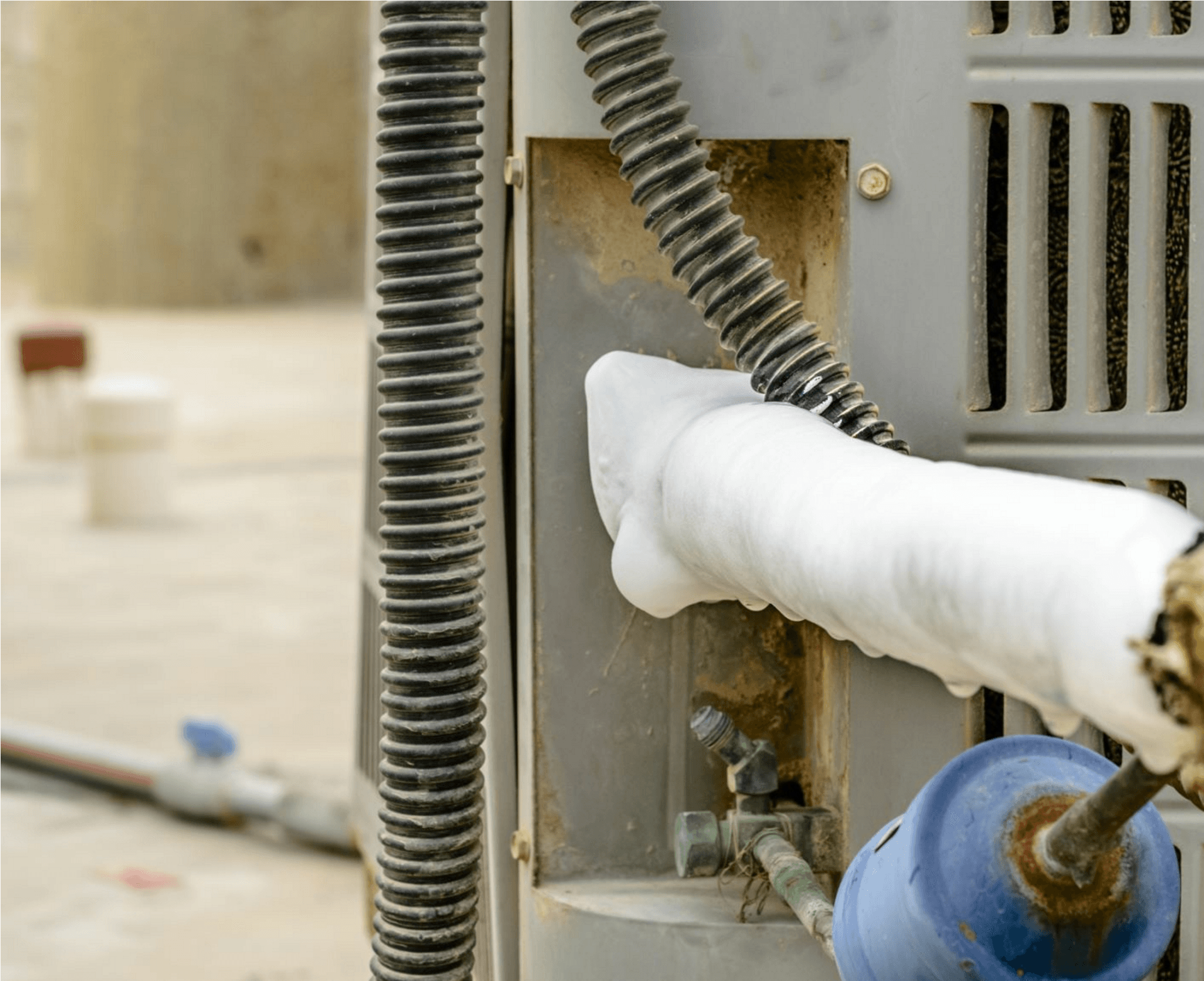How do you really feel on the subject of Air Conditioner Frozen? How To Fix your Frozen AC Line?

Introduction
Finding that your air conditioner pipeline is iced up can be concerning, particularly throughout hot summer months when you depend on your ac system the most. Comprehending what to do in such a situation is crucial to stop additional damages to your air conditioning system and ensure your comfort inside.
Understanding the Causes
Several factors can contribute to the freezing of an a/c pipe. Comprehending these reasons can assist you address the problem properly.
Absence of Airflow
One usual source of an icy air conditioner pipeline is inadequate air movement. When the air flow over the evaporator coil is limited, it can trigger the coil to drop below freezing temperature, resulting in ice formation on the pipeline.
Low Refrigerant Levels
Inadequate refrigerant degrees in your a/c system can likewise cause a frozen pipeline. Low cooling agent degrees can create the pressure in the system to go down, leading to the cold of moisture on the evaporator coil.
Winter Conditions
In cooler climates, freezing temperatures outside can contribute to the cold of air conditioning pipes. If your a/c device is not appropriately shielded or if there are leakages in the ductwork, cold air can infiltrate the system, triggering the pipe to freeze.
Dirty Air Filters
Filthy or stopped up air filters can limit airflow in your air conditioning system, resulting in different problems, including an icy pipeline. It's vital to change or cleanse your air filterings system routinely to guarantee proper air movement and avoid ice buildup.
Indications of a Frozen Air Conditioner Pipe
Acknowledging the indicators of a frozen air conditioning pipeline is important for punctual action.
Reduced Airflow
If you see a substantial decrease in air movement from your vents, it could suggest a frozen pipe.
Ice Buildup on the Pipe
Noticeable ice build-up on the refrigerant line or the evaporator coil is a clear indicator of an icy air conditioning pipeline.
Unusual Sounds from the Unit
Uncommon audios, such as hissing or bubbling, coming from your AC system can indicate that there's ice existing on the pipeline.
Immediate Actions to Take
When confronted with an icy air conditioner pipe, it's important to act swiftly to stop more damage to your cooling system.
Turning off the air conditioner
The very first step is to turn off your air conditioning system to avoid the system from running and intensifying the concern.
Checking for Blockages
Examine the area around the interior unit for any type of obstructions that may be obstructing air flow, such as furnishings or curtains.
Thawing the Pipe
You can utilize gentle approaches like putting towels taken in warm water around the frozen pipe to assist thaw it slowly.
Safety nets
Taking safety nets can help stay clear of future occurrences of an icy AC pipeline.
When DIY Methods Fail
If your efforts to thaw the pipeline or address other concerns are unsuccessful, it's time to call a professional.
Importance of Hiring a Professional HVAC Technician
A certified HVAC professional has the competence and devices essential to detect and fix problems with your a/c system safely and efficiently.
Regular Maintenance Checks
Arrange regular maintenance get in touch with a specialist HVAC service technician to guarantee that your AC system is running efficiently.
Transforming Air Filters
Consistently replace or cleanse your air filters to prevent air movement constraints and maintain ideal performance.
Shielding Exposed Pipes
If your air conditioner pipes are subjected to cool temperatures, consider protecting them to avoid cold throughout winter months.
Seeking Professional Help
If DIY approaches fall short to resolve the issue or if you're unsure about how to proceed, it's best to seek assistance from a qualified HVAC technician.
Conclusion
Dealing with an icy air conditioning pipe can be an aggravating experience, but knowing just how to respond can aid lessen damage and recover comfort to your home. By understanding the reasons, recognizing the indicators, and taking timely action, you can properly attend to the concern and stop future occurrences.
Frozen AC Line: Why It Happens & What To Do About It
A frozen AC line can be a rather peculiar sight in a place like Phoenix, Arizona where nothing ever freezes. In this post, we’ll discuss what makes an air conditioner line frozen – and what you can do about it.
Dirty Air Filters
Did you know that you should be cleaning or replacing your air filters on a monthly basis? Failing to do this can result in airflow issues that, in turn, cause your evaporator coils and lines to freeze over. You’ll notice a buildup of ice on both components, although the buildup on your pipes will, of course, be more evident unless you open your air condition up to reveal the coils.
What To Do About It
Give your air filter a good cleaning if it’s reusable. If not, replace the filter outright. Next, switch your air conditioner’s fan setting on and leave it there for 2-3 hours. This will draw warm air in, helping to thaw your evaporator coil. You can also check out this article for some tips on cleaning the coils themselves if you’d like to speed the process up. Before you switch the unit back to its normal state, make sure the supply vents are completely unobstructed and free of dust or other debris.
If you keep having this issue even after replacing your filters regularly, contact a local HVAC repair company and have them inspect your evaporator coil, ductwork, and any other components that may be at fault. If you live in the Phoenix, Arizona area, give American Home Water and Air a call.
Low Refrigerant Levels/Leakage
What To Do About It
Contrary to what air conditioner “recharge” companies often tell their clients about refrigerant, it should never need to be simply refilled. You see, refrigerant runs in what experts refer to as a “closed loop.” Refrigerant really shouldn’t be leaving that loop. If it is, you’ve got a leak.
Paying someone to come and pump more refrigerant into your system (aka “recharge” it) isn’t the solution. Doing that will simply kick the can down the road. Besides, refrigerant leaks can be harmful to the environment and people in your home.
Rather, you need to take care of the leak with the help of a technician. Check out this article for some more information about dealing with air conditioners that are leaking refrigerant. Before you contact a technician, switch your thermostat to the off position. Then, switch the fan setting on and let it run for 2-3 hours so the unit can thaw.
Improper Temperature Setting
Improper temperature settings can also cause a drop in your air conditioner’s pressure. What many people don’t realize is that air conditioners are actually designed to run when temperatures have fallen above roughly 60 degrees Fahrenheit. If you run the unit when it’s cold outside, you’ll run into many issues, including frozen components.

I hope you enjoyed reading our section on Have a Frozen AC Line? Here’s How to Fix It. Thanks a lot for taking time to browse our post. Sharing is nice. Who knows, you will be helping someone out. I love reading our article about Have a Frozen AC Line? Here’s How to Fix It.
Click Here